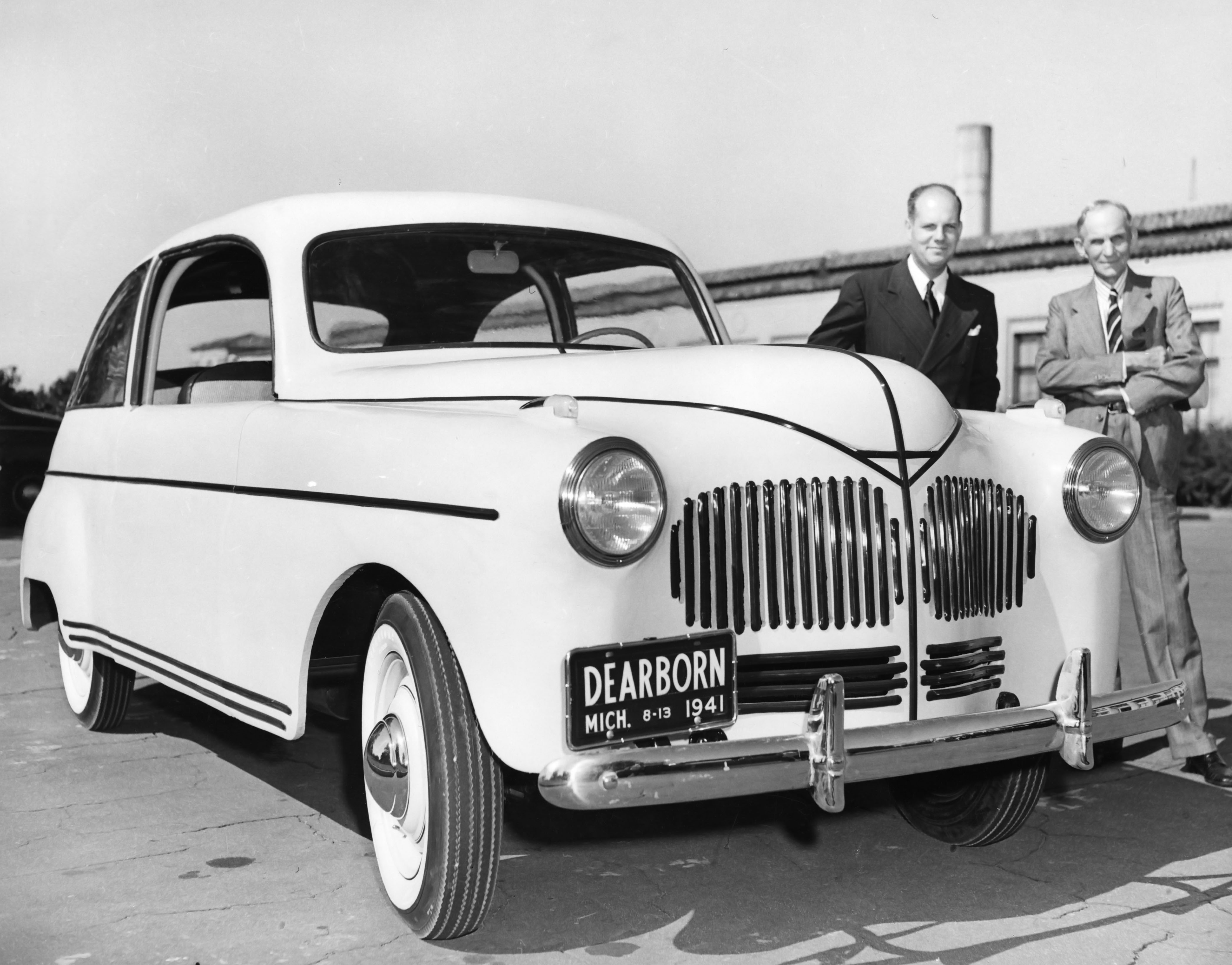
There are countless memorable photos in Ford Motor Company’s nearly 120-year history, but few have had the staying power of founder Henry Ford whacking a brand-new Ford car with an axe. In reality, he was winding up to swing at his personal car, which had been outfitted with a plastic rear deck lid, to demonstrate the strength of an automotive plastic created from soybeans.
Ford’s use of soybeans dates back nearly to its founding, with the Model T, which at one point contained 60 pounds of soybeans between paint and molded plastic parts. By the 1930s, the company was using soybean-based enamel in paints and oil casting molds. In 1935, each vehicle was said to contain two bushels’ worth of the beans in parts such as the horn button, gearshift knob, door handles and accelerator pedal. The material was even used under the hood in the engine’s timing gears. Ford, who went as far as to have a suit made entirely from soybean material, took their use a step further in pushing for a vehicle itself made of soybeans.
By the early 1940s, after more than a decade of research and development, the “soybean car” had arrived. It came both out of necessity, as wartime steel shortages were hurting the automotive industry and Henry Ford predicting a switch to plastic, as well as his passion for agriculture and the environment. He had also claimed that the plastic could withstand more abuse and was safer than traditional steel bodies, to the extent it could withstand a rollover crash. He also believed the plastic car bodies made from soybeans were lighter and would be less costly to produce.
The company had been working extensively with soybeans by the late-1930s, most notably with the addition of a soy processing plant at the Rouge which opened in 1935. However, the soybean car was developed by a group of nearly 30 scientists at the Soybean Research Lab at Greenfield Village over a 12-year process, according to the New York Times.
